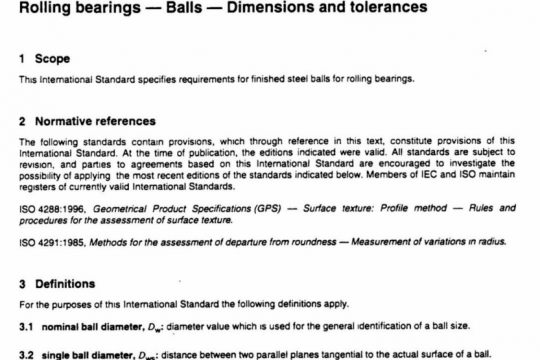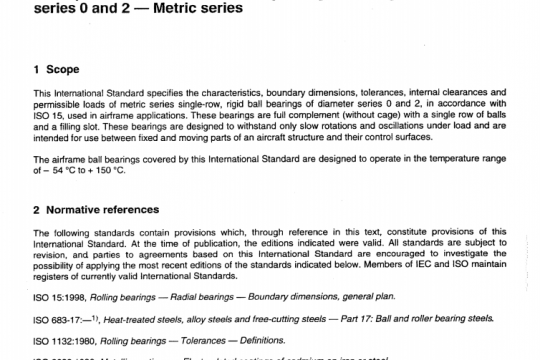ABMA 7:1995(S2013) pdf free
ABMA 7:1995(S2013) pdf free.SHAFT AND HOUSING FITS FOR METRIC RADIAL BALL AND ROLLER BEA RINGS (EXCEPTTA PERED ROLLER BEA RINGS) CONFORMING TO BASIC BOUNDARY PLAN
To select the proper fits, it is necessary to consider the type and extent of the load, bearing type, and certain other design and performance requirements.
The required shaft and housing fits are indicated in Tables 1 and 3. The terms “Light”, “Normal” and “Heavy” loads refer to radial loads that are generally related to C as shown in Figure 3 (Cr being the Basic Dynamic Radial Load Rating computed in accordance with ANSI/ABMA Standards).
Table I indicates the initial approach to shaft fit selection. Note that for most normal applications where the shaft rotates and the radial load direction is constant, an interference fit should be used. Also, the heavier the load, the greater is the required intrference. For stationary shaft conditions and constant radial load direction, the inner ring may be moderately loose on the shaft.
Table 2 shows the shaft diameter deviations and resultant fits for the various tolerance classifications for bore sizes over 3mmandupto1250mm.
Table 3 indicates the initial approach to housing fit selection. Note that the use of clearance or interference fits is mainly dependent upon which bearing ring rotates in relation to the radial load. For indeterminate or varying load directions, avoid clearance fits. Clearance fits are preferred in axially split housings to avoid distorting bearing outer rings, The extent of the radial load also influences the choice of fit.Table 4 shows the housing bore deviations and resultant fits for the various tolerance classifications for outer diameter sizes over 10 mm and up to 2500 mm.
Since interference ftting will reduce bearing radial internal clearance, it is recommended that prospective users consult bearing manufacturers to make certain that the required bearings are correctly specified to satisfy all mounting, environmental and other operating conditions and requirements.This is particularly necessary in those cases where heat sources in associated parts may further diminish bearing clearances in operation.ABMA 7 pdf free download.




